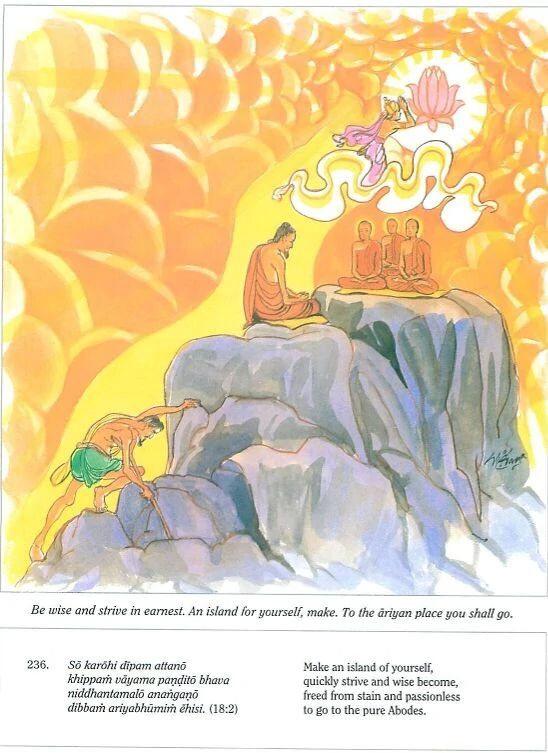Certainly #3 would be more meritorious than #8. But, provided he/she following the right path.
I have seen monks that were of bad characters and strayed away from the Buddha’s teachings.
I have seen certain monks are endlessly engage in disgracing the ancient Pāli tradition that was preserved for thousands of years. I have also seen monks, while wearing robes, practising witchcraft and wrong practices. I have also seen a well recognised monk, while enjoying requisite offerings and fame, taught a form of Attavada (soul transmigration and Antarabhava exists) and even makes it as if Buddhavacana. These monks acting as if they were enlightened and often receiving much supports and praises, even followers (and some ordained under them). And soon their followers do the same thing. I find this terrifying.
There was a time that this thought even entered my mind: “Perhaps monkhood nowadays is much more dangerous than a householder’s livelihood. Like someone who is riding a big alpha elephant, high and comfort; yet if the position is not balanced and not well-trained, the elephant rider could fall from the back of elephant and hit the ground, which will lead to serious injuries, even death. So too, a monastic member, though enjoying moral high ground and supported by layfollowers; if he/she is not of good character or not well-trained in the Dhamma-Vinaya, he/she will too fall from good state and accumulates much demerits, even reborn as hell being due to unwholesome actions. Seeing that Adhamma is on the rise and Saddhamma is losing, why would I bet my well-being for it? If I am to be led by a misguided monk (while being unaware) and caught up in wrong views, surely there will be no hope in future. But if I remain as a virtuous layfollower, while accumulating merits such as Dana & Sila, carry out proper duties, working on Sotapatti Magga Phala & also making firm aspiration for Enlightenment…that would be a safer path. Just like a man or woman, sitting on a small chair; even if due to carelessness he/she should fall from the chair, still he/she will not incur serious injuries or death.” Such is my previous thought.
This is something I can experience by myself. For quite some time, I was taught that it is good to reject the tradition and authority (I was told by a local Sri Lankan temple’s Bhikkhu, a Dhamma teacher, I wouldn’t mention his name here, that I shouldn’t have read Visuddhimagga, for it is the reason why there is no more Arahant in Sri Lanka). I believed that and I even put away the book and shun all good teachings associated with this book. I even told my family members that this book is not of authentic Dhamma. For many years I was like a blind turtle, swimming here and there, couldn’t find a real answer to explain the one of the core factors in Paṭiccasamuppāda, which is “Viññāṇa paccaya Nāma-Rupa”. But for these years of confusion, though my dislike toward orthodoxy and confusion grows, I did not forget to do Kusala deeds such as donation, five precepts, chanting, Buddha puja offerings, etc. I got a habit of making aspiration that, “whatever good merits I accumulated, by that power of merits, may the right path appears to me !” Perhaps my aspiration works, one day when I was sitting pondering on my confusion in Dhamma topics, there I saw the bookshelf where my copy of Visuddhimagga situated. There I still remember that there was a sudden thought flashed in my mind: “I will read it now”. Then I pick up the book, sit down and read it with attended mind; when I reach Paññābhumi Niddesa, my confusion in “Viññāṇa paccaya Nāma-Rupa” is gone. Since then, I confess my folly and taken up Pāli Tipitaka along with Atthakatha.
![]()

